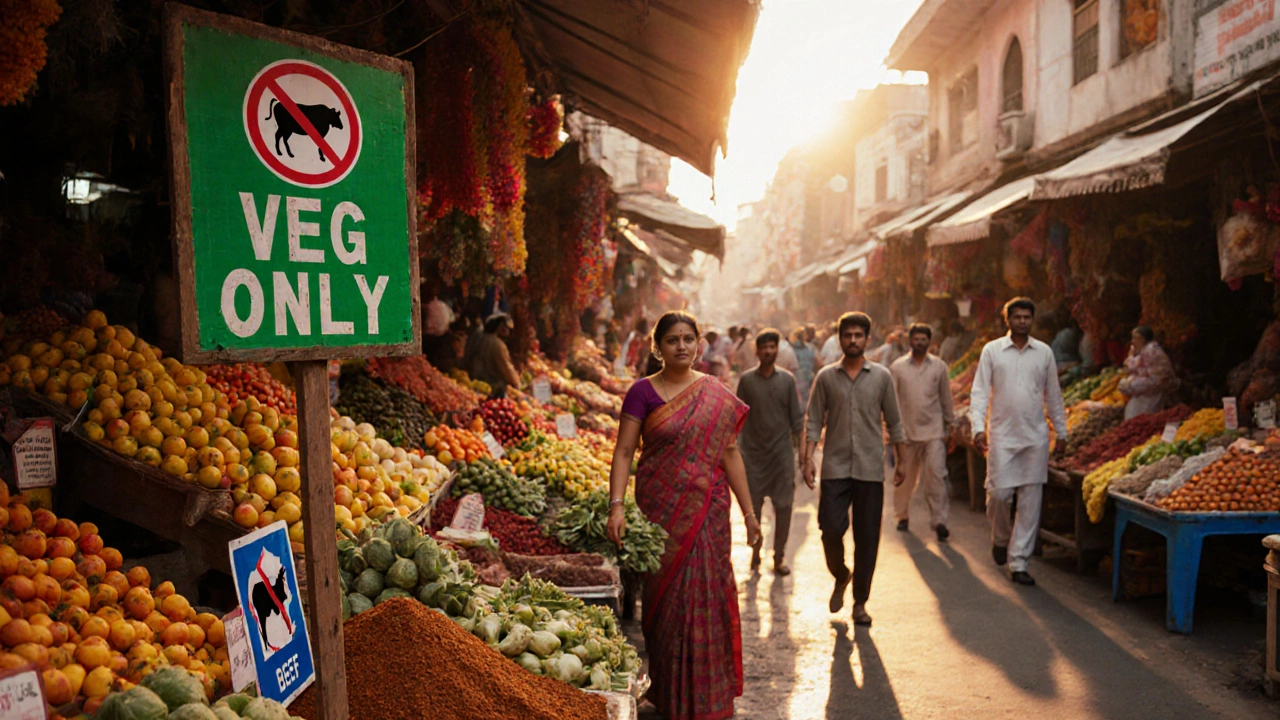
India’s Food Taboos: What Not to Eat Across Regions & Religions
Explore India's food taboos across religions and regions, learn what not to eat, and get practical tips for travelers to respect local customs.
When we talk about Indian cuisine taboo, the unspoken rules around what people eat—and don’t eat—across India’s diverse communities. Also known as food restrictions in India, it’s not just about spice levels or vegetarianism. It’s about identity, religion, caste, and deep-rooted traditions that shape daily meals. You might think it’s all about cows, but the truth runs deeper. In Tamil Nadu, for example, beef isn’t just avoided—it’s culturally unthinkable for most. In parts of Gujarat, even onions and garlic are left off the plate during religious fasts. These aren’t random quirks. They’re inherited practices tied to centuries-old beliefs.
Many of these taboos come from Hindu dietary rules, a system of food ethics rooted in concepts of purity, ahimsa (non-violence), and spiritual balance. For many Hindus, eating meat—especially beef—is linked to violating sacred life. But it’s not just about religion. In some communities, eating certain fish is forbidden during monsoon season because it’s believed to carry impurities. Others avoid eggs during pregnancy, not for health reasons, but because they’re seen as too ‘heating’ for the body. Even in urban India, these rules hold strong. A family might serve a vegetarian meal to guests during a temple visit, even if they eat meat at home. The food isn’t just fuel—it’s a signal of belonging.
And then there’s the Tamil food customs, a distinct set of practices in Tamil Nadu that blend ritual, seasonality, and ancestral memory. In rural Tamil households, you won’t find chicken served on a banana leaf during a funeral. In some villages, coconut water is offered to the dead, but never to the living on certain days. These aren’t superstitions to be dismissed—they’re living traditions passed down through generations. Even today, many Tamils won’t eat jackfruit during the first week of the Tamil month of Aadi, believing it brings bad luck. These rules aren’t written in holy books; they’re whispered at kitchen tables, taught by grandmothers, and lived without question.
What’s surprising is how these taboos vary even within the same state. In Kerala, Christians eat beef without hesitation, while their Hindu neighbors don’t. In Bengal, fish is sacred, but pork is rarely touched. In Punjab, dairy is king, but eggs are often avoided by orthodox Sikhs. There’s no single Indian food code—only layers of local logic. And that’s why understanding Indian cuisine taboo isn’t about listing forbidden items. It’s about seeing how food becomes a mirror of belief, community, and history.
Below, you’ll find real stories and explanations from across India—why some communities avoid garlic, why temple food stays plain, how caste still shapes what’s served on a plate, and what happens when tradition meets modern life. These aren’t abstract rules. They’re the quiet, powerful forces behind every meal.

Explore India's food taboos across religions and regions, learn what not to eat, and get practical tips for travelers to respect local customs.